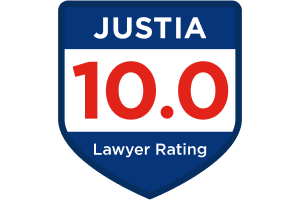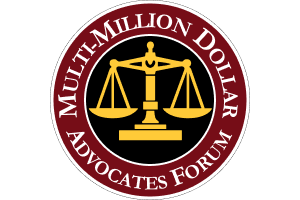Recognizing and Resolving Your Personal Injury Case
Monroe County Bar Association
November 15, 2002
Ira H. Leesfield
Leesfield & Partners
2350 South Dixie Highway
Miami, Florida 33133
(305) 854-4900
Auto Negligence Cases
1. The vehicle – the scene – the environment
Every analysis of a motor vehicle collision must be proved from three different aspects:
- driver error
- product defect
- environmental defect/causes
2. The search for insurance coverage; third party; uninsured motorist / underinsured motorist
3. Establishing liability
4. Establishing damages
5. Insurance coverage
6. Client evaluation and preparation
7. Client interview
8. Discovery and trial preparation
9. Recent Case Law
Ridley v. Safety Kleen Corp., 693 So. 2d 934 (Fla. 1996): Violation of a traffic ordinance is evidence of negligence; it does not conclusively establish a party’s negligence in an automobile negligence case. Failure of a Plaintiff to wear a seat belt, therefore, is evidence of the Plaintiff’s comparative negligence, and should be raised to show evidence of comparative negligence.
Florida Power & Light Co. v. Periera, 705 So. 2d 1359 (Fla. 1998): The Plaintiff’s violation of a traffic ordinance does not relieve a Defendant of the duty of care owed both to that Plaintiff and to the general public.
Aurbach v. Gallina, 753 So. 2d 60 (Fla. 2000): In Florida, the courts are to apply the “dangerous instrumentality principle” in cases where the owner of a car entrusts that car to another driver. The owner is vicariously liable for the negligence of the permissive driver.
Dockery v. Enterprise Rent-A-Car Co., 796 So. 2d 593 (Fla. 4th DCA 2001): In order for a car owner to be relieved of liability for the actions of the driver of the automobile, the owner has the burden of showing that there was a conversion or theft of the car prior to the negligent act of the driver.
Hertz Corp. v. Jackson, 617 So. 2d 1051 (Fla. 1993): As owner of the automobile, a car rental company is vicariously liable, under Florida’s “dangerous instrumentality principle,” for negligent acts of persons to whom it rents. The only exceptions to this liability include: (1) where the car is left with a service company for repair; and (2) where there has been a conversion or theft of the car preceding the negligent acts of the driver.
Premises liability
1. Finding the facts at client interview
2. Use of expert witness
3. Case potential
4. Absence of no-fault threshold
5. Case preparation and exhibits (take decent exhibits – Godur – JEL)
6. Preparing the client for deposition
7. Finding the right defendant
8. Use of Request for Admissions and Interrogatories
9. Overcoming jury bias
10. Recent Case Law
Owens v. Publix Supermarkets, Inc., 802 So. 2d 315 (Fla. 2001): The existence of a foreign substance on the floor of a business premises that causes a customer to fall and be injured is not a safe condition, and the existence of that unsafe condition creates a rebuttable presumption that the premises owner did not maintain the premises in a reasonably safe manner. This presumption arises both from the theory that the owner had constructive notice of the condition, and that the owner’s mode of business operation was negligent.
Markowitz v. Helen Homes of Kendall Corp., 2002 WL 2018735 (Fla. 2002): Operating a business in such a way that creates a foreseeable risk that dangerous foreign substances will be on the floor is a negligent mode of operation, giving rise to an owner’s liability for injuries that may be caused by visitors slipping on the foreign substance.
Levy v. Home Depot, Inc., 518 So. 2d 941 (Fla. 3d DCA 1998): A property owner or occupier owes two separate duties of care to an invitee: (1) to keep the property in a reasonably safe condition and to warn of known dangers; and (2) to warn invitees of concealed dangers which are, or should have been known to, the owner or occupier of the property.
Pooser v. South Florida Aluminum, Inc., 752 So. 2d 27 (Fla. 1st DCA 2000): The duty of care to be observed by subcontractors on a work site is to not create or maintain a condition that could be unreasonably dangerous to other employees working at the site.
Whitt v. Silverman, 788 So. 2d 210 (Fla. 2001): Evaluation of negligence arising from conditions on a property that result in injuries or damages to persons off the premises should be evaluated along the lines of established negligence standards: reasonability under the circumstances. The Court declined to impose absolute liability in cases where foliage or other features on a landowner’s property blocks the line of sight of a roadway.
Negligent Security
1. Creative lawyering
2. The non-obvious defendant
3. Criminal acts with civil liability
4. Lessons learned
5. Inadequate lighting, deterrence procedures and staffing
6. Joint and several liability
7. Identifying the defendant
8. Use of expert witnesses and exhibits including crime grids
9. Recent Case Law
Merrill Crossings Assoc. v. Wal-Mart Stores, Inc., 705 So. 2d 560 (Fla. 1997): The party alleged to have failed to provide adequate security may not reduce its liability to the Plaintiff by allegations of the intervening and intentional action of that person’s assailant where the assault was of the exact sort that the security measures were supposed to have protected against.
Garcia v. Konckier, 771 So. 2d 550 (Fla. 3d DCA 2000): Foreseeability of dangerous actions gives rise to a duty of a property owner or proprietor of a public place of business to provide adequate security against this foreseeable threat.
F.J.W. Enter., Inc. v. Johnson, 746 So. 2d 1145 (Fla. 5th DCA 1999): Reaffirms the standard of proof in negligent security cases that was established in Stevens v. Jefferson, 436 So. 2d 33 (Fla. 1983). The proprietor of a place of public business owed invitees a duty to use due care to maintain the premises in a reasonably safe condition commensurate with the activities conducted at the business. The test of liability is whether the type of activity that injured the Plaintiff was reasonably foreseeable to occur on the premises.
Foster v. Po Folks, Inc., 674 So. 2d 843 (Fla. 5th DCA 1996): A property owner or occupier owes invitees a duty of care to protect them against reasonably foreseeable criminal attacks on the premises.
Nursing Home Liability
1. Working with new statute
2. Identifying nursing home case
3. Is age a factor?
4. Decubitus ulcers
5. Malpractice vs. nursing home negligence
6. Finding right expert
7. What you should know about Florida Nursing Home
8. Insurance coverage and financial responsibility
9. Recent Case Law
Somberg v. Florida Convalescent Ctr., Inc., 779 So. 2d 667 (Fla. 3d DCA 2001): A personal representative of a decedent nursing home resident may collect damages under Florida’s Nursing Home Act for violation of Fla. Stat. § 400.022, resulting in the resident’s pre-death pain and suffering. The nursing home’s liability to the personal representative is not limited by the Wrongful Death Act where the nursing home’s violation of the patient’s rights set out in § 400.022 Fla. Stat. resulted in the death of the resident.
Beverly Enterprises-Florida v. Spilman, 661 So. 2d 867 (Fla. 5th DCA 1995): Damages for a nursing home’s violation of a resident’s rights set out in Fla. Stat. § 400.023 may include punitive damages where the nursing home’s actions show willful, wanton, or intentional misconduct.
First Healthcare Corp. v. Hamilton, 740 So. 2d 1189 (Fla. 4th DCA 1999): In this case, the 4th DCA directly conflicts with the Spilman decision of the 5th DCA by holding that the personal representative of a decedent nursing home resident may not sue for the decedent’s pain and suffering before death; the personal representative’s recovery is limited by Florida’s Wrongful Death Act.
Beverly Enterprises-Florida v. Knowles, 763 So. 2d 1285 (Fla. 4th DCA 2000): A cause of action asserted against a nursing home for violation of a resident’s rights set out in § 400.022 may only be brought by the personal representative of the decedent’s estate where the violation of the resident’s rights resulted in death, not where the resident died of other causes before the institution of the action.







